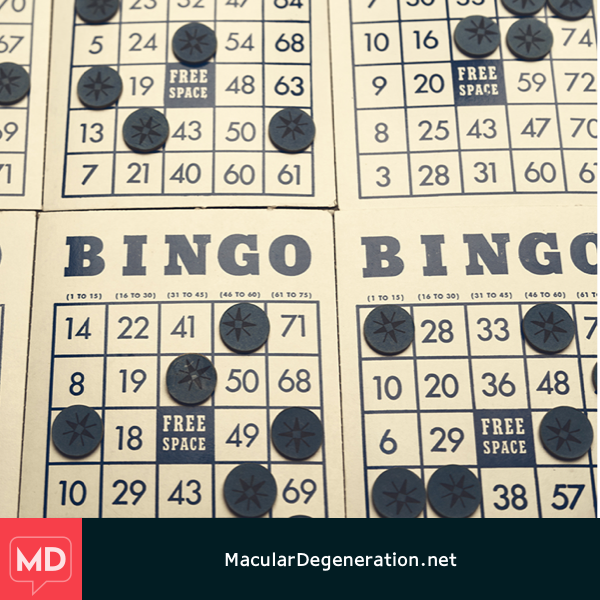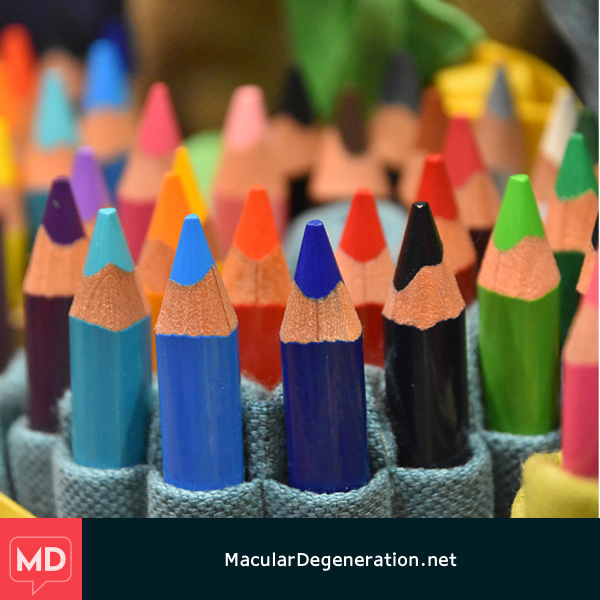What I See: What Does Macular Degeneration Look Like?
It's easy to research and read about common symptoms of macular degeneration (AMD), but it's much more difficult to comprehend what it's actually like to see the world through the eyes of someone with AMD. We hear from many of you that this is one of the hardest aspects of living with macular degeneration – others just don't really understand what it's like.
Common symptoms of AMD
We want to help bridge that gap. What does it really feel and looks like to live with macular degeneration every day?
We've created a visual of these common AMD symptoms below to help others truly understand what some of these more common symptoms of macular degeneration are like. We hope this article is something that you can share with your family members, loved ones, and friends in order to help them better understand what life may be like through your eyes.
Blurry central vision
One of the most common symptoms of macular degeneration is blurry central vision. In the following two images, you can compare a visual without this symptom to one that is suffering from blurry central vision. Blurriness can especially impact one's ability to accomplish more detail-oriented activities like reading, sewing, and painting.
Straight lines appear wavy
Distorted vision, also known as metamorphopsia, is when straight lines appear wavy. This symptom is typically associated with wet AMD and myopic macular degeneration. Many doctors encourage patients to use an Amsler Grid regularly to check their eyes and notice if lines become distorted and wavy.
The following images show a standard view of a staircase compared to the view someone may have while experiencing this symptom.
Blind spots
A blurry or blind spot, also known as a scotoma, can appear and obstruct one's visual field. With macular degeneration, a blind spot most often appears in the central visual field. If the disease progresses, the blurriness or darkness of the spot become larger and more severe, making it very difficult if not impossible to read, drive, or discern faces.
The following image displays what these blind spots may look like for some.
Changes in color perception
Another common symptom of macular degeneration is changes in color perception. Photoreceptor cone cells are responsible for our color vision and are most densely located in the macula. When the disease weakens these cones, the wavelengths will be perceived differently and the correct signals will not be sent to the brain.
This symptom occurs in both AMD and Stargardt disease, with some people developing complete color blindness in late Stargardt disease. If the disease progresses, more cone cells become weakened and damaged, risking the loss of all color perception. The following images display how colors can become distorted with macular degeneration.









Join the conversation